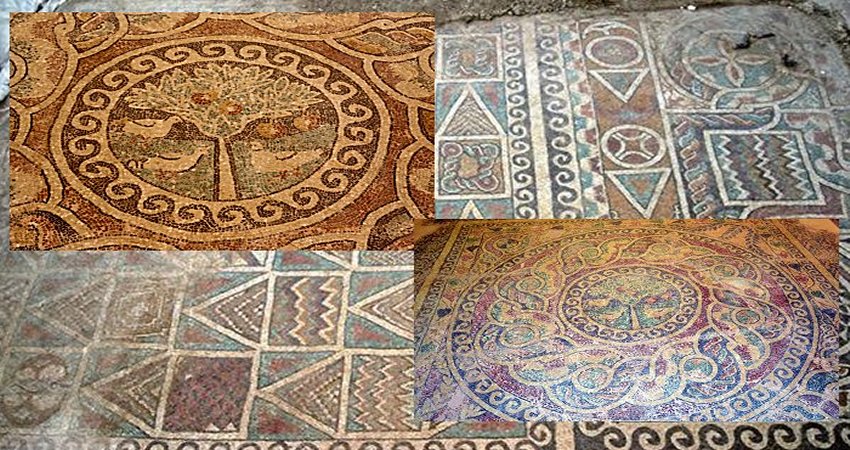Conny Waters – MessageToEagle.com – The 2013 archaeological excavations in the Yavru village, Black Sea province of Amasya, Turkey revealed 2,000-year-old and unique mosaics with kilim-like motifs possibly dated to the Roman period.

Image credit: Anatolia News Agency
After seven years, for the first time, a 1,800-year-old mosaic depicting an apple tree at the center can be admired by visitors.
In July 2013, “officials in the village of Yavru carried out a salvaging mission at a site where an illegal archaeological dig had been attempted, writes Daily Sabah.
“It was here that a 24-square-meter (258-square-feet) mosaic belonging to the floor of a chapel was discovered.
The mosaic depicts apples, an apple tree, partridges, and a plethora of geometric figures. It has since been brought to Amasya Archeology Museum following the successful completion of the renovation work. The historical artifact has been a draw for visitors to the city, which is known for its tasty apples, exported to many locations.

The 1,800-year-old mosaic with apple figures in Amasya. Image credit: DHA via Daily Sabah
“The mosaics that had been found in a palace-like place had a different design when compared to the other artifacts in the same era,” Çorum Hittite University’s Black Sea archeology research and application center manager assistant professor, Esra Keskin explained.
The mosaics were surrounded by curbstones, and bird figures and shapes depicted on the mosaics represent another characteristic image of the ancient times of Amasya that had a history going back 8,000 years.
The mosaic is believed to have decorated a chapel’s floor in Amasya province, northern Turkey, July 20, 2020. Image credit: DHA
Keskin also said that “the eye shapes on the kilim designs of the mosaics still retain their secrets. The mosaics cover an area of 30 square meters and the kilim-like motifs on it show that they might have been the coat of arms of a military unit in the Roman era.”
Turkey is a treasure trove of ancient mosaics that once adorned the walls and floors of palaces and houses of nobles of ancient civilizations. Many mosaics have been unearthed during ongoing excavations, especially in the southeastern provinces of Gaziantep and Hatay.
Gaziantep hosts the Zeugma Mosaic Museum, one of the largest mosaic museums in the world. The 30,000-square meter museum is named after an ancient city’s most famed mosaic whose “Gypsy Girl” centerpiece was retrieved from the United States in 2018.
Written by Conny Waters – MessageToEagle.com – AncientPages.com Staff Writer







